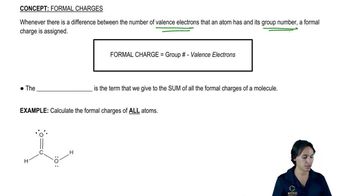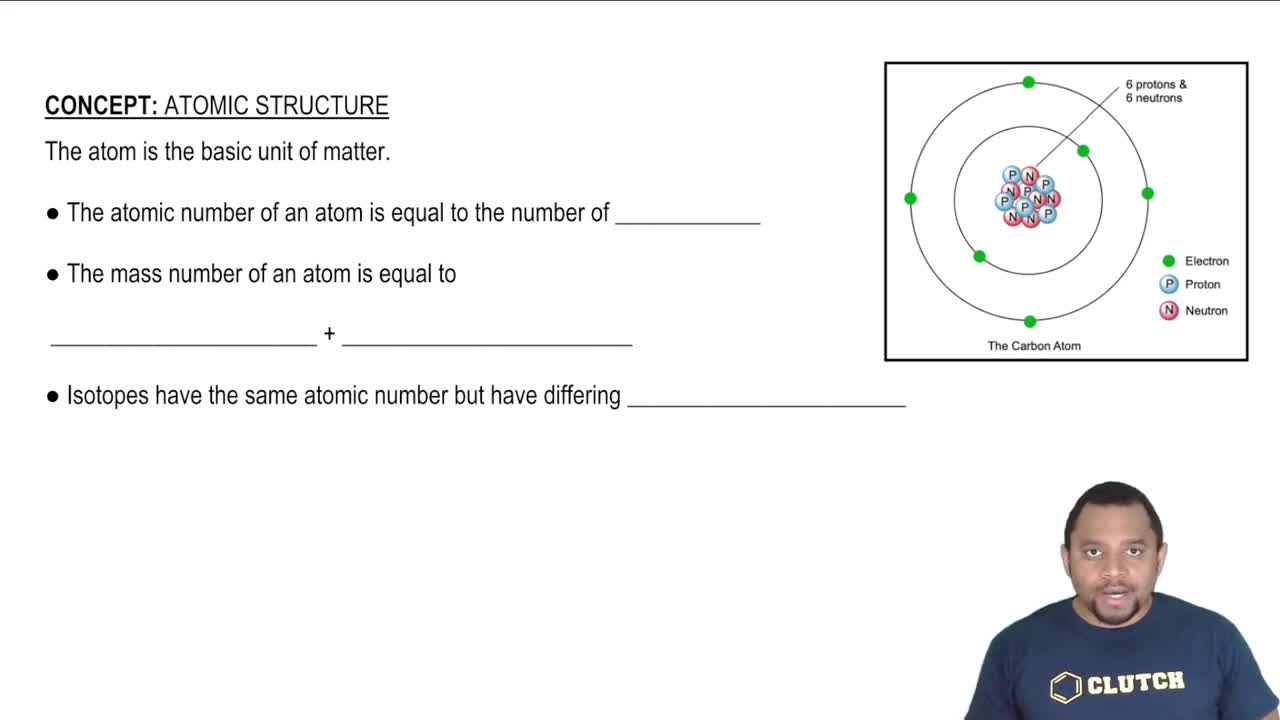By moving an electron pair, draw a better Lewis structure that minimizes formal charges.
(a)
 Verified step by step guidance
Verified step by step guidance Verified video answer for a similar problem:
Verified video answer for a similar problem:



 1:34m
1:34mMaster Calculating formal and net charge. with a bite sized video explanation from Johnny
Start learning